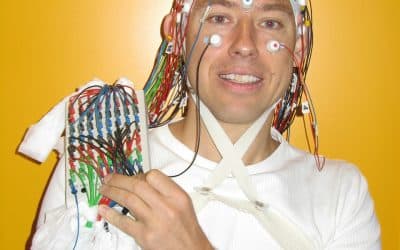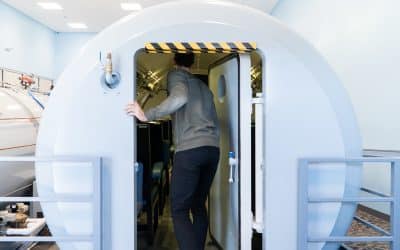Abstract: The abnormal metabolic processes following traumatic brain injury (TBI) have been proposed to contribute to secondary injuries after TBI. Therefore, enteral nutrition (EN) support for TBI patients has received more attention. This study aimed to evaluate the...
Brain Damage
Hyperbaric Oxygen Therapy (HBOT) Research for Brain Damage.
Hyperbaric oxygen therapy applied research in traumatic brain injury: from mechanisms to clinical investigation.
Abstract: Traumatic brain injury (TBI) is the leading cause of mortality and morbidity for millions of young people and military personnel around the world every year. Regardless of severity, neurological dysfunction is a sequela of TBI. Although many preclinical and...
Unestablished indications for hyperbaric oxygen therapy.
Abstract: Unestablished indications are conditions in which systematic clinical use of hyperbaric oxygen treatment (HBOT) is not supported by adequate proof of benefit. HBOT is vulnerable to use in many such conditions for various reasons, perhaps the most important...
All the right moves: the need for the timely use of hyperbaric oxygen therapy for treating TBI/CTE/PTSD.
Abstract: The modern age of hyperbaric medicine began in 1937; however, today few know about hyperbaric oxygen's effects on the body and medical conditions outside of diving medicine and wound care centers - a serious ethical issue as there are 20 US military veterans...
Hyperbaric oxygen therapy for chronic post-concussive syndrome.
Abstract: In this editorial, the value of hyperbaric oxygen therapy in the management of chronic post-concussive syndrome following mild traumatic brain injury is discussed. Davis, Shoja, Tubbs, Griessenauer, , , , , (2014). Hyperbaric oxygen therapy for chronic...
EEG Neurofeedback therapy: Can it attenuate brain changes in TBI?
Abstract Background: Electroencephalogram Neurofeedback therapy (EEG-NFT) has several potential beneficial effects in terms of improving cognition and electrophysiological regulation among patients with brain injury. However, in vivo structural and functional changes...
Reflections on the neurotherapeutic effects of hyperbaric oxygen.
Traumatic brain injury (TBI) and stroke are the major causes of brain damage and chronic neurological impairments. There is no agreed-upon effective metabolic intervention for TBI and stroke patients with chronic neurological dysfunction. Clinical studies published this year present convincing evidence that hyperbaric oxygen therapy (HBOT) might be the coveted neurotherapeutic method for brain repair. Here we discuss the multi-faceted role of HBOT in neurotherapeutics, in light of recent persuasive evidence for HBOT efficacy in brain repair and the new understanding of brain energy management and response to damage. We discuss optimal timing of treatment, dosage, suitable candidates and promising future directions.
Effects of hyperbaric oxygen on eye tracking abnormalities in males after mild traumatic brain injury.
The effects of hyperbaric oxygen (HBO2) on eye movement abnormalities in 60 military servicemembers with at least one mild traumatic brain injury (TBI) from combat were examined in a single-center, randomized, double-blind, sham-controlled, prospective study at the Naval Medicine Operational Training Center. During the 10 wk of the study, each subject was delivered a series of 40, once a day, hyperbaric chamber compressions at a pressure of 2.0 atmospheres absolute (ATA). At each session, subjects breathed one of three preassigned oxygen fractions (10.5%, 75%, or 100%) for 1 h, resulting in an oxygen exposure equivalent to breathing either surface air, 100% oxygen at 1.5 ATA, or 100% oxygen at 2.0 ATA, respectively. Using a standardized, validated, computerized eye tracking protocol, fixation, saccades, and smooth pursuit eye movements were measured just prior to intervention and immediately postintervention. Between and within groups testing of pre- and postintervention means revealed no significant differences on eye movement abnormalities and no significant main effect for HBO2 at either 1.5 ATA or 2.0 ATA equivalent compared with the sham-control. This study demonstrated that neither 1.5 nor 2.0 ATA equivalent HBO2 had an effect on postconcussive eye movement abnormalities after mild TBI when compared with a sham-control.
Repetitive long-term hyperbaric oxygen treatment (HBOT) administered after experimental traumatic brain injury in rats induces significant remyelination and a recovery of sensorimotor function.
Abstract: Cells in the central nervous system rely almost exclusively on aerobic metabolism. Oxygen deprivation, such as injury-associated ischemia, results in detrimental apoptotic and necrotic cell loss. There is evidence that repetitive hyperbaric oxygen therapy...


